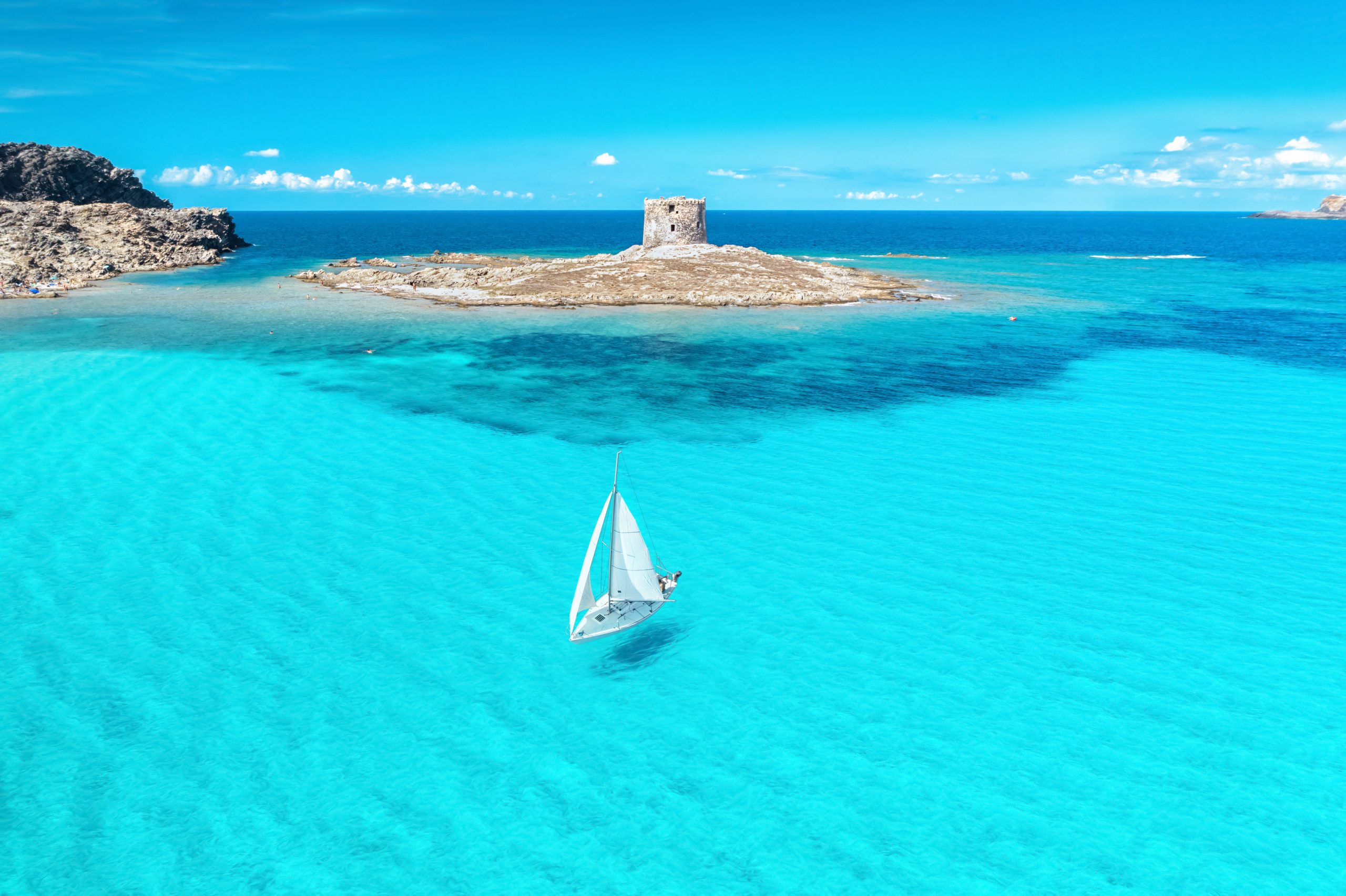LA PELOSA
Who hasn’t at least seen pictures of him? After all, it is a world icon, a must-see stop on a vacation in northern Sardinia. It appears like a painting: fine, white sand, soft, almost impalpable, unique transparencies, water at the ankles for dozens of meters, Caribbean hues, sky-blue, turquoise, azure blending with the sky, emerald green, cobalt blue, finally deep blue. Sand and water leave unique sensations on the skin. The outline is of soft dunes covered with junipers: shades and scents of Mediterranean scrub remind you that you are in Sardinia, despite its tropical appearance. La Pelosa is an oasis of blinding beauty, topping all the charts according to travelers’ opinions: several times best beach in Italy, often among the first in the Mediterranean and in Europe, even in the top ten of the most spectacular in the world. The beloved symbol of the Island has made the country of ‘residence’ famous, Stintino, which went from being a fishing village to a renowned tourist resort also and especially thanks to this masterpiece of nature.
Protecting the wonder from the rush of the open sea are thePiana island, so flat that it does not obstruct the spectacle of the majestic rocks ofAsinara behind it, and the striking dark stacks of Cape Falcone, on top of which stands the granitic Falcone tower, from 1537, which can be reached by mountain bike. Here, from a ‘terrace’, 200 meters above sea level, you will enjoy a ‘contrasting’ view: to the west imposing cliffs overhanging the ‘sea outside’; to the east the ‘sea inside’, calm and renamed ‘the seven-colored’. At the foot of the rugged promontory of black shale, lies a small island dominated by the Pelosa tower, built in 1578 to control transit to the gulf, now a distinctive feature of the beach. You will reach it on foot after crossing the delightful cove known as the The Fluffy, next to the ‘big sister’. The natural reef means that the water is calm even when the mistral blows, as well as clear and very shallow, perfect for families with children.
La Pelosa is ‘free’ for more than half of the extension, the rest is lido equipped with deckchairs, sunbeds and umbrellas. You will also be able to rent inflatable boats and jet skis. Parking is a few meters from the strand. The road connecting it to the charming village of Stintino, which is connected by bus-shuttle services, measures about three and a half kilometers. In the village and along the road to the beach, which can be traveled by bike, you will find accommodations and restaurants, where you can enjoy delicious seafood dishes. The beach is extremely crowded in July and August, so to admire it in its extraordinary uniqueness, it is best to visit in the ‘off’ season. It is as beautiful as it is fragile: over decades it has undergone change and erosion, including by maxiflux. To protect it, regulations have been enacted: mat under the bathing towel, no smoking (except in designated areas), rinsing of feet and beach equipment. Measures in addition to wooden boardwalks and barriers to block access to the dunes.
Stintino in the beginning was entirely similar to Cala d’Oliva, a village on Asinara where the 45 families of Ligurian origin came from who, when the island became a penal colony (1885), settled in a tongue of land between two inlets, the ‘Old’ and ‘New’ ports. The town’s history is linked to fishing and tuna processing, which you will relive in the museum of the Tonnare, set up in a tuna fishery active until the 1970s and entitled ‘the memory of memory’. Stintino’s territory is a strip of land that stretches between two seas, almost touching Asinara: to the west high and rugged coastline, to the east low, from Pelosa to the expanses of round white pebbles that plunge into the blue sea of The Salt Flats and of
Ezzi Mannu
. From Stintino you can travel to Asinara to explore it on organized excursions. For more than a century, the island, now national park (in the territory of Porto Torres), has been in isolation: you will admire unspoiled landscapes where time seems to stand still, to be traveled by bike, horseback, off-road vehicle or train. The western side sinks with steep cliffs, the eastern side is low and sandy with coves under maximum protection, such as Cove St. Andrew‘s, and accessible with limitations, such as Sabina Cove. The seabed is a paradise to explore.

